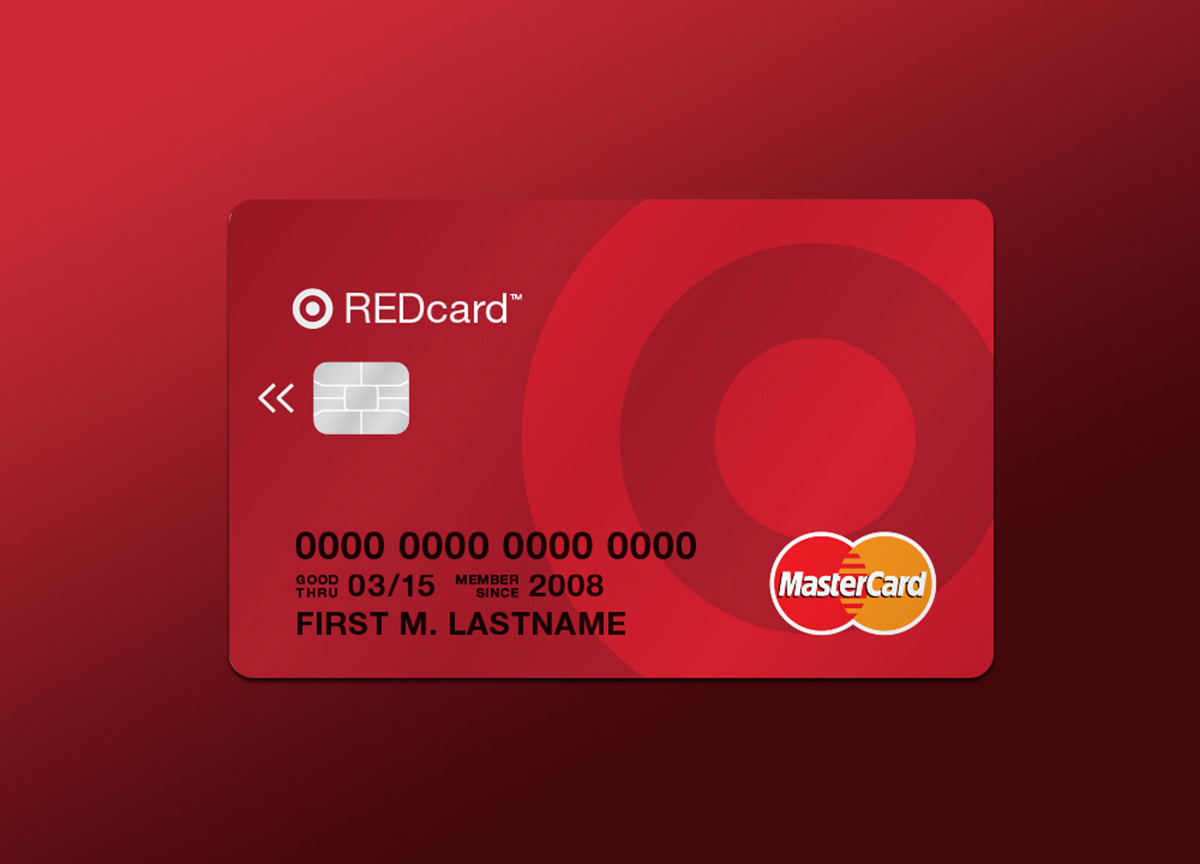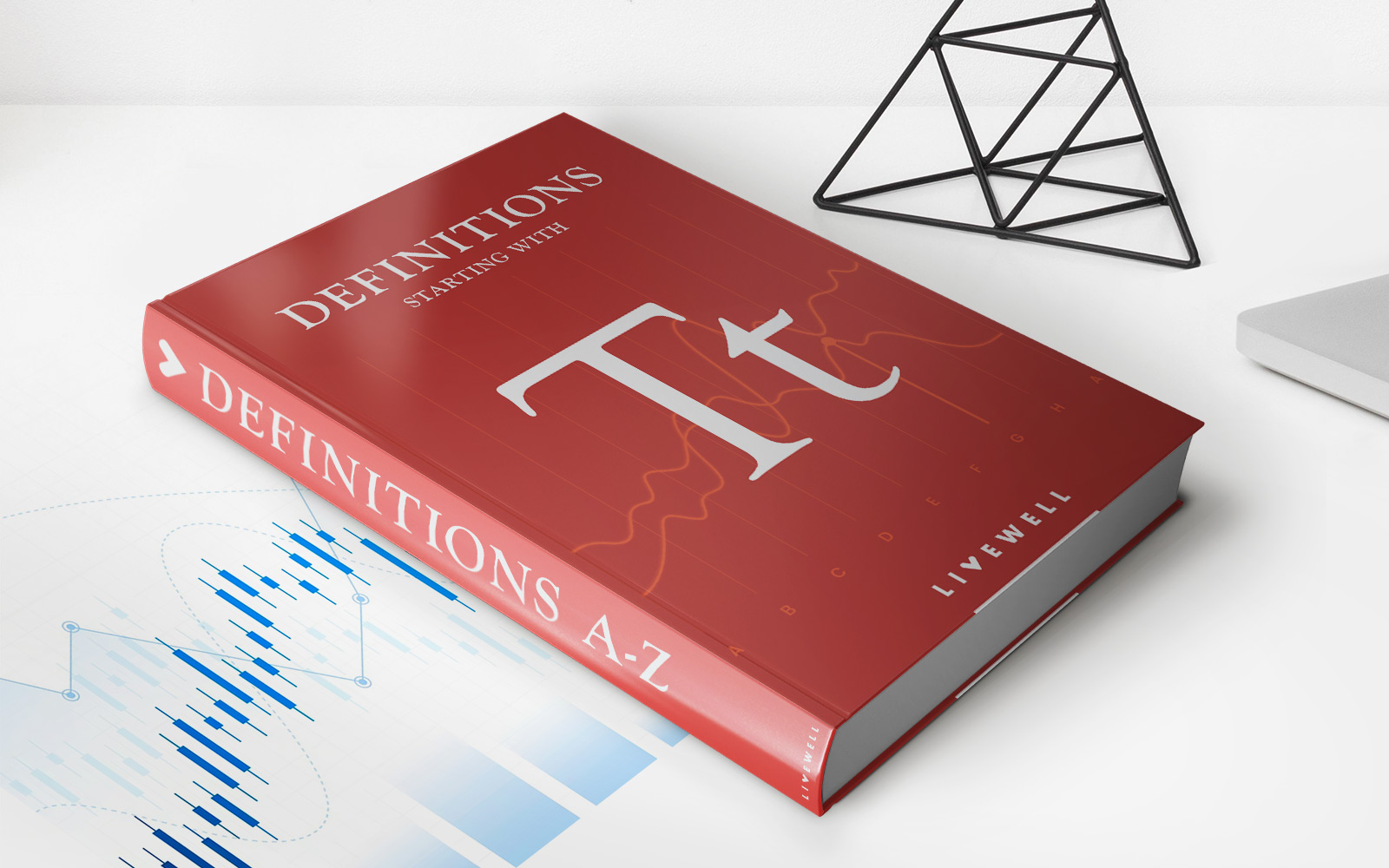

Finance
What Banks Do Student Loans
Published: January 19, 2024
Discover what banks offer student loans for financing your education. Get information on student loan interest rates, repayment options, and eligibility criteria.
(Many of the links in this article redirect to a specific reviewed product. Your purchase of these products through affiliate links helps to generate commission for LiveWell, at no extra cost. Learn more)
Table of Contents
- Introduction
- Understanding Student Loans
- Repayment Options
- Federal Student Loans
- Subsidized Loans
- Unsubsidized Loans
- Direct PLUS Loans
- Private Student Loans
- Eligibility Requirements for Private Student Loans
- Interest Rates and Terms for Private Student Loans
- Application Process for Private Student Loans
- Student Loan Services Offered by Banks
- Loan Origination
- Loan Servicing
- Loan Consolidation and Refinancing
- Repayment Assistance Programs
- The Role of Banks in the Student Loan Industry
- Partnership with Educational Institutions
- Marketing and Promotion Strategies
- Role in Loan Disbursement and Collection
- Conclusion
Introduction
Student loans play a critical role in helping individuals achieve their educational goals. They provide the necessary financial support to cover tuition fees, books, and living expenses. While many students rely on student loans to finance their education, not everyone is familiar with the role that banks play in the student loan industry.
In this article, we will explore what banks do with regards to student loans. We’ll discuss the different types of student loans available, both federal and private, and how banks play a crucial role in the origination, servicing, and consolidation of these loans. We’ll also delve into the specific services that banks offer to student loan borrowers, such as loan origination, servicing, and repayment assistance programs.
Understanding the role that banks play in the student loan industry is essential for students and their families to make informed decisions about their education financing options. Whether you’re a student considering taking out a loan or a parent looking for information on repayment options, this article will provide you with valuable insights into the role of banks in the student loan process.
Understanding Student Loans
Before diving into the role of banks in the student loan industry, it’s important to have a basic understanding of what student loans are and how they work. Student loans are financial assistance provided to students to help them cover the costs of their education. These loans come with a specific repayment plan that usually begins after the student completes their education or drops below a certain number of credits.
Repayment options for student loans can vary depending on whether the loan is federal or private. Federal student loans, for example, offer more flexible repayment options, such as income-driven repayment plans and loan forgiveness programs. Private student loans, on the other hand, have repayment terms set by the lender and often require a higher credit score or a cosigner.
Now, let’s take a closer look at the different types of student loans available and how they are used to finance education.
- Federal Student Loans: These loans are funded by the federal government and are available to both undergraduate and graduate students. There are three main types of federal student loans:
- Subsidized Loans: These loans are awarded based on financial need. The government pays the interest that accrues on the loan while the student is in school, during the grace period, and during deferment periods.
- Unsubsidized Loans: Unlike subsidized loans, these loans are not based on financial need. The student is responsible for paying the interest that accrues on the loan during all periods.
- Direct PLUS Loans: These loans are available for graduate and professional students, as well as parents of dependent undergraduate students. They come with higher interest rates and require a credit check.
- Private Student Loans: These loans are offered by banks, credit unions, and other financial institutions. Private student loans have fixed or variable interest rates based on the borrower’s creditworthiness. They often require a cosigner, especially for students with little to no credit history.
Understanding the types of student loans available and their repayment options is crucial for students and their families to make informed decisions about their education financing. In the next section, we will discuss the services offered by banks for student loans, both federal and private, and how they assist borrowers throughout the loan process.
Repayment Options
Once students have completed their education or dropped below a certain number of credits, they typically enter the repayment phase of their student loans. Repayment options for student loans can vary depending on the type of loan and the borrower’s financial situation. Understanding the available repayment options is crucial to manage and pay off student loan debt effectively.
For federal student loans, there are several repayment plans to choose from:
- Standard Repayment Plan: This is the default plan with fixed monthly payments over a 10-year period.
- Graduated Repayment Plan: Payments start off lower and increase every two years over a 10-year period.
- Income-Driven Repayment Plans: These plans adjust the monthly payment amount based on the borrower’s income and family size. There are several income-driven plans, including Income-Based Repayment (IBR), Pay As You Earn (PAYE), Revised Pay As You Earn (REPAYE), and Income-Contingent Repayment (ICR).
- Extended Repayment Plan: This plan allows borrowers to extend the repayment period up to 25 years, resulting in lower monthly payments.
Private student loans usually have fewer repayment options compared to federal loans. Borrowers typically have the choice between fixed or variable interest rates and the option to make immediate or deferred payments while in school.
It’s important for borrowers to consider their financial situation, career path, and long-term goals when selecting a repayment plan. Choosing the right repayment option can help manage monthly payments, reduce interest costs, and even potentially qualify for loan forgiveness programs.
Banks play a crucial role in assisting borrowers with their repayment options. They provide information and guidance on the available plans, help borrowers understand the implications of each option, and offer resources to navigate the repayment process effectively.
In the next sections, we will dive deeper into the specific services that banks offer for student loans, including loan origination, loan servicing, loan consolidation, refinancing, and repayment assistance programs.
Federal Student Loans
One of the most common types of student loans are federal student loans, which are funded by the U.S. Department of Education. These loans are available to both undergraduate and graduate students, providing them with financial aid to cover their education expenses.
There are three main types of federal student loans:
- Subsidized Loans: Subsidized loans are awarded based on financial need. The government pays the interest that accrues on the loan while the borrower is in school, during the grace period, and during deferment periods. This means that borrowers do not have to worry about interest adding up during these periods, reducing the overall cost of the loan.
- Unsubsidized Loans: Unlike subsidized loans, unsubsidized loans are not based on financial need. The borrower is responsible for paying the interest that accrues on the loan during all periods. While the interest may be deferred until after graduation, it is added to the total loan balance, resulting in higher overall costs.
- Direct PLUS Loans: Direct PLUS loans are available for graduate and professional students, as well as parents of dependent undergraduate students. These loans require a credit check and have higher interest rates compared to subsidized and unsubsidized loans. PLUS loans can be used to cover the remaining cost of attendance after other financial aid has been applied.
Federal student loans offer several benefits for borrowers. They typically have lower interest rates compared to private loans, and some income-driven repayment plans are available to make monthly payments more manageable. Additionally, federal loans may offer deferment or forbearance options for borrowers facing financial hardships or in certain circumstances, forgiveness programs may be available.
Banks play a crucial role in the origination and servicing of federal student loans. They act as financial intermediaries between the borrower and the federal government, providing borrowers with the necessary funds for their education and assisting them throughout the loan process.
It’s important for borrowers to understand the terms and conditions of their federal student loans, including interest rates, repayment plans, and eligibility requirements for forgiveness or discharge programs. Being knowledgeable about the specifics of federal student loans can help borrowers make informed decisions about their education financing and successfully manage their loan obligations.
In the next section, we will explore private student loans and the role of banks in offering these loans to students.
Subsidized Loans
Subsidized loans are a type of federal student loan awarded based on financial need. These loans offer significant benefits to borrowers, as the government covers the interest that accrues on the loan during specific periods.
With subsidized loans, the government pays the interest while the borrower is in school, during the grace period after graduation, and during deferment periods. This means that borrowers do not have to worry about interest adding up during these periods, which can save them a substantial amount of money over the life of the loan.
To be eligible for subsidized loans, students must demonstrate financial need, which is determined through the Free Application for Federal Student Aid (FAFSA). The amount of subsidized loan a student can receive depends on various factors, including the cost of attendance at their chosen educational institution and their financial need.
Repayment for subsidized loans typically begins six months after the borrower graduates, drops below half-time enrollment, or leaves school. During the repayment period, borrowers have several repayment plan options to choose from, including standard repayment, graduated repayment, and various income-driven repayment plans. These options allow borrowers to tailor their monthly payments based on their income and financial situation.
Subsidized loans are particularly advantageous for borrowers because the government’s coverage of interest during specific periods reduces the overall cost of the loan. This can significantly reduce the burden of student loan debt for borrowers, especially for those who may face financial challenges after graduation.
Banks play a vital role in the origination and servicing of subsidized loans. They work with the federal government to disburse the funds to students and track the loan during the borrower’s enrollment and repayment period. Banks also provide resources and assistance to borrowers to help them understand their repayment options, navigate the loan process, and manage their loan obligations effectively.
It’s important for borrowers to recognize the benefits and responsibilities associated with subsidized loans. While the government’s interest subsidy can save borrowers money, it’s essential to stay informed about the loan’s terms and conditions, understand the repayment options, and make timely payments to maintain a good credit history.
In the next section, we will explore another type of federal student loan: unsubsidized loans.
Unsubsidized Loans
Unsubsidized loans are another type of federal student loan that differs from subsidized loans in terms of eligibility and interest accrual. Unlike subsidized loans, unsubsidized loans are not based on financial need, meaning that any eligible student can apply for and receive these loans.
With unsubsidized loans, the borrower is responsible for paying the interest that accrues on the loan throughout the life of the loan. This includes during enrollment, the grace period after graduation, and deferment periods. While borrowers have the option to defer interest payments while in school, the interest is added to the total loan balance, resulting in a higher overall cost.
Similar to subsidized loans, the amount of unsubsidized loan a student can receive depends on various factors, including the cost of attendance at their chosen educational institution and their dependency status. However, unlike subsidized loans, the financial need of the student does not play a role in determining the loan amount.
Repayment for unsubsidized loans typically begins six months after the borrower graduates, drops below half-time enrollment, or leaves school. Borrowers have several repayment plan options to choose from, including standard repayment, graduated repayment, and various income-driven repayment plans. These options allow borrowers to select a repayment plan that aligns with their financial circumstances.
While unsubsidized loans do not offer the interest subsidy provided by subsidized loans, they still offer several benefits to borrowers. These loans have relatively low fixed interest rates compared to private loans, and borrowers have more repayment flexibility compared to private lenders. Additionally, qualifying borrowers may be eligible for loan forgiveness or discharge programs, depending on their chosen career path or circumstances.
Banks play an essential role in the origination and servicing of unsubsidized loans. They work with the federal government to disburse these loans to students, provide guidance on repayment options, and support borrowers throughout the loan process. Banks also offer online portals and resources that allow borrowers to manage their loan accounts conveniently.
It’s crucial for borrowers to understand the terms and conditions of unsubsidized loans, including the interest accrual, repayment options, and repayment obligations. Staying informed about these factors can help borrowers make informed decisions, effectively manage their student loan debt, and achieve their financial goals.
In the next section, we will explore another type of federal student loan: Direct PLUS loans.
Direct PLUS Loans
Direct PLUS loans are a type of federal student loan available to graduate and professional students, as well as parents of dependent undergraduate students. These loans are different from subsidized and unsubsidized loans in terms of eligibility requirements and interest rates.
To qualify for a Direct PLUS loan, borrowers must undergo a credit check. While the credit requirements are not as strict as those for private loans, borrowers with adverse credit history may need to provide additional documentation or seek an endorser to secure the loan. Unlike subsidized and unsubsidized loans, the eligibility for Direct PLUS loans does not depend on financial need.
Direct PLUS loans offer several benefits to borrowers, including the ability to cover the remaining cost of attendance after other financial aid has been applied. These loans can help fill the gap in funding for education expenses that may not be covered by other sources such as scholarships, grants, and other federal student loans. However, it’s important to note that Direct PLUS loans typically have higher interest rates compared to subsidized and unsubsidized loans.
Repayment for Direct PLUS loans typically begins within 60 days after the loan is fully disbursed. Borrowers have several repayment options to choose from, such as standard repayment, graduated repayment, and various income-driven repayment plans. These options allow borrowers to select a repayment plan that aligns with their financial situation and goals.
Banks play an important role in the origination and servicing of Direct PLUS loans. They work with the federal government to disburse the funds and provide support and guidance to borrowers throughout the loan process. Banks also offer online portals and resources to help borrowers manage their loan accounts efficiently.
It’s crucial for borrowers considering Direct PLUS loans to carefully evaluate their financial situation and understand the terms and conditions associated with the loan. This includes reviewing the interest rates, repayment options, and any potential loan forgiveness or discharge programs. Being informed and making informed decisions can help borrowers effectively manage their student loan debt and achieve their educational and financial goals.
In the next section, we will discuss another avenue for student loans: private student loans offered by banks.
Private Student Loans
In addition to federal student loans, private student loans are another option for financing education. Private student loans are offered by banks, credit unions, and other financial institutions to help students cover the cost of their education expenses.
Private student loans differ from federal loans in several ways. First, private student loans do not require students to demonstrate financial need. Instead, eligibility for private loans is usually based on the borrower’s creditworthiness and income. This means that borrowers with a good credit history may qualify for lower interest rates and more favorable terms.
Interest rates for private student loans are typically variable or fixed, depending on the lender and loan terms. Variable interest rates can fluctuate over time, while fixed interest rates remain the same throughout the life of the loan. Private loan interest rates may be higher than federal loan rates, so it’s crucial for borrowers to compare rates and terms from different lenders to find the best option for their circumstances.
Unlike federal student loans, private student loans do not offer the same borrower protections and benefits. Income-driven repayment plans and loan forgiveness programs are usually not available with private loans. However, some private lenders offer deferment or forbearance options for borrowers facing financial hardship.
The application process for private student loans typically involves submitting an application, providing documentation of income and creditworthiness, and, in some cases, having a cosigner. Many banks have simplified the application process by allowing borrowers to apply online and receive loan decisions quickly.
Banks play a crucial role in providing private student loans to borrowers. They assess the borrower’s creditworthiness, determine the loan amount, disburse the funds to the educational institution, and service the loan throughout the repayment period. Banks also offer online platforms and resources to help borrowers manage their loan accounts and provide customer support for any inquiries or concerns.
It’s important for borrowers considering private student loans to carefully review the terms and conditions, including interest rates, repayment options, and any fees associated with the loan. Comparing different loan offers, understanding the total cost of borrowing, and considering the long-term financial implications are critical steps in making an informed decision.
In the next section, we will explore the various student loan services offered by banks, including loan origination, loan servicing, and loan consolidation.
Eligibility Requirements for Private Student Loans
When considering private student loans, it’s important for borrowers to understand the eligibility requirements set by banks and other financial institutions. While these requirements may vary among lenders, there are some common criteria that borrowers should be aware of.
1. Creditworthiness: One of the primary factors that lenders consider when determining eligibility for private student loans is the borrower’s creditworthiness. Lenders assess the borrower’s credit history and credit score to determine their ability to repay the loan. A higher credit score and a positive credit history typically increase the likelihood of approval and lower interest rates.
2. Income and Employment: Some lenders may consider the borrower’s income and employment status as part of the eligibility criteria. Demonstrating a stable source of income can enhance the borrower’s chances of getting approved for a private student loan.
3. Cosigner: Many private lenders require a cosigner, especially for borrowers with limited credit history or lower credit scores. A cosigner is typically a parent, guardian, or another individual who agrees to take equal responsibility for repaying the loan if the borrower is unable to do so. Having a cosigner with a strong credit history can increase the likelihood of loan approval and potentially result in more favorable loan terms.
4. Enrollment Status: While federal student loans can be obtained regardless of enrollment status, some private lenders require borrowers to be enrolled at least half-time in an eligible educational institution to qualify for a loan. This requirement ensures that funds are being used for educational purposes.
5. U.S. Citizenship or Residency: Many private lenders restrict their loan offerings to U.S. citizens, permanent residents, or eligible non-citizens. Proof of citizenship or residency status may be required as part of the application process.
It’s important for borrowers to research and compare eligibility requirements from different lenders before applying for a private student loan. Meeting the eligibility criteria set by lenders increases the chances of loan approval and obtaining more favorable loan terms.
In addition to meeting the eligibility requirements, borrowers should carefully consider their financial situation, budget, and repayment ability before taking on any student loan. Evaluating the potential impact of borrowing on future finances will help borrowers make informed decisions and avoid excessive debt that could hinder their financial stability after graduation.
In the next section, we will explore interest rates and loan terms for private student loans.
Interest Rates and Terms for Private Student Loans
When considering private student loans, borrowers should pay close attention to the interest rates and terms offered by different lenders. These factors can significantly impact the cost of borrowing and the overall repayment experience. Here’s what borrowers need to know.
1. Interest Rates: Private student loan interest rates can vary depending on the borrower’s creditworthiness, market conditions, and the lender’s policies. Unlike federal student loans with fixed interest rates, private loans may have fixed or variable interest rates. Fixed rates remain the same throughout the loan term, offering stability and predictability in monthly payments. Variable rates, on the other hand, can fluctuate over time based on changes in the market. Borrowers should carefully consider their risk tolerance and financial circumstances when deciding between fixed and variable interest rates.
2. Loan Terms: The loan term refers to the length of time borrowers have to repay their loans. Private student loans typically offer various repayment terms, ranging from 5 to 20 years. Longer loan terms may result in lower monthly payments but greater total interest paid over the life of the loan. Shorter loan terms usually involve higher monthly payments but less overall interest. Choosing the right loan term depends on the borrower’s financial situation and ability to make monthly payments comfortably within their budget.
3. Repayment Options: Private student loan lenders may provide multiple repayment options to borrowers. These options can include immediate repayment, interest-only repayment while in school, or full deferment until after graduation. Borrowers should carefully review and understand these options, considering their financial circumstances and ability to make payments while in school.
4. Fees: Private student loans may come with various fees, including origination fees, application fees, or late payment fees. These fees can vary among lenders and may affect the overall cost of borrowing. Borrowers should carefully review the fee structure and consider it when comparing loan options.
5. Grace Period: Some private student loans offer a grace period, which is a period of time after graduation or leaving school where borrowers do not have to make loan payments. The duration of the grace period can vary among lenders. Borrowers should understand the length of the grace period and be prepared to start making loan payments when it ends.
It’s essential for borrowers to compare interest rates and terms from multiple lenders before deciding on a private student loan. Shopping around and considering different loan options can help borrowers find the most competitive rates and terms that align with their financial goals and repayment capabilities.
Before finalizing a private student loan, borrowers should carefully review the loan agreement and disclosures provided by the lender. Understanding all the terms and conditions will help borrowers make informed decisions and avoid any surprises during the repayment process.
In the next section, we will explore the application process for private student loans.
Application Process for Private Student Loans
Applying for a private student loan involves several steps and requires borrowers to provide necessary information and documentation. While the specific application process may vary among lenders, there are common steps that borrowers can expect. Here’s a general overview of the private student loan application process:
1. Research and Comparison: Before starting the application process, borrowers should research and compare loan options from different lenders. They should consider factors such as interest rates, repayment terms, fees, and borrower benefits. Comparing multiple lenders can help borrowers find the most suitable loan for their needs.
2. Gather Required Documents: Borrowers should gather the necessary documents to complete the application process. Commonly required documents include proof of identity, Social Security number, academic enrollment certificate, and financial information such as income and assets. Depending on the lender, additional documents may be required.
3. Prequalification: Some lenders offer prequalification, which allows borrowers to check their eligibility and potential interest rates without impacting their credit score. Prequalification can help borrowers gauge their borrowing power and determine which lender offers the most favorable terms.
4. Complete the Application: Once borrowers have decided on a lender, they will need to complete the application. This typically involves providing personal, financial, and academic information. The application may be completed online or through a paper application, depending on the lender’s process.
5. Provide Documentation: Along with the application, borrowers will need to submit the required documentation such as income verification, academic enrollment information, and any other supporting documents requested by the lender. These documents help lenders assess the borrower’s eligibility and creditworthiness.
6. Review and Acceptance: After submitting the application and required documentation, the lender will review the application and make a decision. If approved, borrowers will receive a loan offer outlining the terms, interest rates, and loan amount. It’s important for borrowers to carefully review and understand the loan offer before accepting it.
7. Loan Disbursement: Once borrowers accept the loan offer, the lender will coordinate with the educational institution to disburse the funds. The funds are typically sent directly to the school to cover tuition, fees, and other educational expenses. Any remaining funds, after the educational expenses are paid, may be provided to the borrower for other educational-related expenses if applicable.
It’s important for borrowers to carefully read and understand the terms and conditions of the loan before accepting it. Borrowers should be aware of interest rates, repayment terms, fees, grace periods, and any other important details. If anything is unclear, borrowers should reach out to the lender for clarification.
By carefully navigating the application process and understanding the loan terms, borrowers can make informed decisions and secure the private student loan that best fits their educational financing needs.
In the next section, we will explore the various student loan services offered by banks, including loan origination, loan servicing, and loan consolidation.
Student Loan Services Offered by Banks
Banks play a crucial role in the student loan process by offering a range of services to borrowers. These services help borrowers throughout the life of their student loans, from origination to repayment. Here are some of the key services offered by banks:
1. Loan Origination: Banks act as financial intermediaries, providing loans to students and their families to fund their education. They process loan applications, review eligibility criteria, disburse loan funds to educational institutions, and ensure all necessary documentation is completed.
2. Loan Servicing: Once a student loan is originated, banks take on the responsibility of loan servicing. This entails managing the loan account, sending monthly statements, and collecting payments. Banks provide various options for making payments, including online payments, automatic deductions, and traditional mail-in payments.
3. Loan Consolidation and Refinancing: Banks often offer loan consolidation and refinancing options for borrowers who want to streamline their repayment or secure better interest rates. Loan consolidation combines multiple loans into a single loan with a fixed interest rate and a single monthly payment. Refinancing allows borrowers to secure a more favorable interest rate by taking out a new loan to replace an existing one.
4. Repayment Assistance Programs: Banks may offer repayment assistance programs to help borrowers who are facing financial hardship. These programs may include options for deferment, forbearance, and alternate repayment plans such as income-driven repayment. Banks also provide resources and guidance to borrowers on managing their loans, understanding their repayment options, and navigating the repayment process effectively.
5. Customer Support: Banks have dedicated customer support teams to assist borrowers with any questions, concerns, or issues related to their student loans. Borrowers can reach out to the bank’s customer service representatives for support with payment inquiries, loan account management, and general loan-related assistance.
6. Online Account Management: To enhance convenience and accessibility, banks provide online account management platforms. This allows borrowers to log into their accounts, view loan details, make payments, set up automatic payments, and access important documents and repayment information. These online portals provide borrowers with easy access to up-to-date loan information and simplify the loan management process.
By offering these services, banks support borrowers in effectively managing their student loans and navigating the repayment process. This helps borrowers stay organized, meet their repayment obligations, and achieve their financial goals.
In the next section, we will explore the role of banks in the student loan industry and their partnerships with educational institutions.
Loan Origination
Loan origination is a critical service provided by banks in the student loan industry. It involves the process of creating and disbursing student loans to borrowers, enabling them to finance their education. Here’s an overview of the loan origination process offered by banks:
1. Application Review: Banks review loan applications submitted by borrowers, evaluating their eligibility based on factors such as creditworthiness, income, and enrollment status. They assess the borrower’s ability to repay the loan and determine the loan amount that can be approved.
2. Loan Documentation: Banks require borrowers to provide various documents to finalize the loan application. These documents typically include identification proof, enrollment verification, income verification, and other supporting documentation as required. The bank verifies the authenticity and accuracy of the provided information.
3. Loan Approval: Once the loan application and documentation are reviewed, the bank makes a decision regarding loan approval. If the borrower meets the lender’s criteria and the application is complete, the loan is approved, and the borrower receives a loan offer detailing the loan terms, interest rates, and other pertinent information.
4. Loan Disbursement: Upon acceptance of the loan offer, the bank coordinates with the borrower’s educational institution to disburse the loan funds. The bank sends the appropriate amount to the school, which is then applied to cover tuition fees, books, and other educational expenses. Any remaining funds, if applicable, may be provided to the borrower to address additional educational costs.
5. Loan Counseling: Some banks offer loan counseling or educational resources to borrowers to help them better understand the terms and conditions of their loan. This may include providing information on repayment options, interest rates, and managing the loan throughout the repayment period. Loan counseling ensures that borrowers are well-informed and equipped to make responsible decisions regarding loan repayment.
Loan origination is a crucial part of the student loan process, as it enables borrowers to secure the necessary funds for their education. Banks play a pivotal role in evaluating loan applications, assessing borrower eligibility, and disbursing funds to educational institutions. They ensure transparency and compliance throughout the origination process, guiding borrowers through the steps required to secure their student loans.
Borrowers should carefully review the loan terms and conditions before accepting the loan offer. Understanding the interest rates, repayment options, and obligations associated with the loan is crucial for borrowers to effectively manage their student loan debt.
In the next section, we will explore the role of banks in loan servicing and their assistance to borrowers throughout the repayment process.
Loan Servicing
Loan servicing is a vital service provided by banks to borrowers in the student loan industry. Loan servicing involves the management and administration of loans after they have been disbursed. Here is an overview of the loan servicing process offered by banks:
1. Loan Account Management: Banks create loan accounts for borrowers and establish online platforms or portals where borrowers can access their loan information. These platforms allow borrowers to view loan details, make payments, update personal information, and access important documents related to their loan.
2. Generation of Statements: Banks generate and send monthly loan statements to borrowers, providing them with a detailed breakdown of their loan balance, interest accrued, and any payments made. These statements help borrowers track their loan progress, understand the outstanding balance, and stay informed about their repayment status.
3. Payment Collection: Banks are responsible for collecting loan payments from borrowers. They provide various payment options, including online payments, automatic deductions, and traditional mail-in payments. Banks ensure that payments are accurately recorded and applied to the borrower’s loan account.
4. Customer Support: Banks have dedicated customer support teams to assist borrowers with any loan-related inquiries or concerns. Borrowers can reach out to the bank’s customer service representatives for assistance with loan account management, payment inquiries, and general loan-related questions.
5. Monitoring Loan Status: Banks closely monitor the status of borrowers’ loans, ensuring that they are in compliance with the repayment terms. They keep track of delinquent or defaulted accounts and may provide guidance and support to help borrowers bring their loans back into good standing.
6. Repayment Assistance: Banks may offer various repayment assistance programs to borrowers facing financial hardships. These programs may include options for deferment, forbearance, or alternate repayment plans such as income-driven repayment. Banks provide resources and support to borrowers, helping them navigate their repayment options and manage their loans effectively.
Loan servicing is an ongoing process to support borrowers throughout the repayment period. Banks ensure accurate loan accounting, provide resources to borrowers, and offer assistance when needed. They play a crucial role in facilitating timely and seamless loan repayments and helping borrowers successfully fulfill their loan obligations.
It’s important for borrowers to stay engaged with their loan servicer, monitor their account regularly, and promptly address any concerns or questions that may arise during the repayment process. By maintaining open communication and staying informed, borrowers can effectively manage their student loans and work towards successful loan repayment.
In the next section, we will discuss loan consolidation and refinancing services offered by banks.
Loan Consolidation and Refinancing
Banks offer loan consolidation and refinancing services to borrowers as a way to streamline their student loan repayment or secure more favorable interest rates. These services can provide borrowers with the opportunity to simplify their loans or potentially save money over the life of their loans. Here’s an overview of loan consolidation and refinancing:
1. Loan Consolidation: Loan consolidation involves combining multiple loans into a single loan. This can help borrowers simplify their repayment process by having only one monthly payment to manage instead of multiple payments. By consolidating loans, borrowers can potentially extend the repayment term, resulting in a lower monthly payment. It also allows borrowers to switch from variable interest rates to a fixed interest rate, offering stability and predictability in monthly payments.
2. Loan Refinancing: Loan refinancing involves taking out a new loan to replace an existing loan. With refinancing, borrowers aim to secure more favorable terms, such as a lower interest rate, different loan repayment options, or a shorter loan term. This can result in potential cost savings over time. Refinancing is often sought by borrowers with a strong credit history or an improved financial situation since taking out the initial loan.
Both loan consolidation and refinancing can be beneficial for borrowers, depending on their individual circumstances. While it can simplify repayment and potentially reduce monthly payments, borrowers should carefully consider the impact of extending the loan term. This may result in paying more interest over time, even if the monthly payment is reduced.
When refinancing, borrowers should carefully compare interest rates, repayment terms, and loan features from different lenders to find the most suitable option. It’s important to consider factors such as the potential savings, fees associated with refinancing, and any benefits provided by the new lender.
Banks facilitate loan consolidation and refinancing by offering competitive interest rates and favorable terms to borrowers. They guide borrowers through the application process, review the necessary documentation, and disburse the new loan funds to pay off existing loans. Banks also provide resources and assistance to help borrowers understand their options, determine the potential impact on their repayment, and make informed decisions.
Before pursuing loan consolidation or refinancing, it’s important for borrowers to thoroughly evaluate their financial situation, repayment goals, and the terms offered by lenders. Understanding the advantages, potential savings, and any implications associated with these services will enable borrowers to make an informed decision that aligns with their needs and financial goals.
In the next section, we will explore the various repayment assistance programs that banks may offer to borrowers to help them manage their student loans.
Repayment Assistance Programs
Banks recognize that borrowers may face financial challenges during their student loan repayment journey. To support borrowers in managing their loans effectively, banks often offer repayment assistance programs. These programs provide various options and resources to help borrowers navigate their repayment obligations. Here are some common repayment assistance programs offered by banks:
1. Deferment and Forbearance: Banks may offer deferment or forbearance options for borrowers experiencing financial hardship, unemployment, or other unexpected circumstances. Deferment allows borrowers to temporarily postpone making payments on their loans, usually without accruing interest during the deferment period. Forbearance, on the other hand, allows borrowers to temporarily reduce or pause their loan payments, but interest continues to accrue. These options provide borrowers with breathing room during challenging times, allowing them to get back on their feet before resuming regular payments.
2. Income-Driven Repayment Plans: Income-driven repayment plans are designed to make loan payments more manageable based on the borrower’s income and family size. Banks may offer various income-driven plans, such as Income-Based Repayment (IBR), Pay As You Earn (PAYE), Revised Pay As You Earn (REPAYE), and Income-Contingent Repayment (ICR). These plans adjust the monthly payment amount, typically capping it at a certain percentage of the borrower’s discretionary income. After a designated number of years in an income-driven plan, borrowers may be eligible for loan forgiveness.
3. Repayment Assistance Resources: Banks provide borrowers with resources and guidance on how to effectively manage their loans. They offer online tools, educational materials, and financial literacy resources to empower borrowers to make informed decisions about their loan repayment options. These resources may include budgeting tips, loan calculators, and information on repayment plans and loan consolidation.
4. Employer-Provided Repayment Assistance: Some banks collaborate with employers to offer repayment assistance programs as part of employee benefits. These programs may include employer contributions to loan payments or loan forgiveness incentives after a certain period of employment. Such programs can provide significant financial relief and support for borrowers who are employed by partnering organizations.
Banks play a crucial role in assisting borrowers with repayment assistance programs, ensuring that borrowers have access to the necessary resources and support. These programs can help alleviate financial burdens and provide options for borrowers to navigate their repayment journey more effectively, especially during challenging times.
It’s important for borrowers to proactively communicate with their loan servicers or banks to explore available repayment assistance options. Being proactive and taking advantage of these programs can help borrowers stay on track with their loan payments and manage their student loan debt successfully.
In the next section, we will explore the role of banks in the student loan industry, including their partnerships with educational institutions.
The Role of Banks in the Student Loan Industry
Banks play a significant role in the student loan industry, acting as key financial intermediaries between borrowers and the funds necessary to finance their education. Their involvement spans several crucial aspects of the student loan process. Here’s a closer look at the role of banks:
1. Loan Origination: Banks facilitate the origination of student loans by reviewing borrowers’ applications, assessing eligibility criteria, and disbursing loan funds. They work closely with borrowers to ensure that loan requirements are met, necessary documentation is submitted, and funds are allocated appropriately to educational institutions.
2. Loan Servicing: Banks assume the responsibility of loan servicing after loans are disbursed. They manage borrower accounts, generate monthly statements, collect and process loan payments, and provide customer support for any loan-related inquiries or concerns. Banks ensure transparency in loan accounting, making it easy for borrowers to stay informed about their loan status and repayment progress.
3. Loan Consolidation and Refinancing: Banks offer services for loan consolidation and refinancing to help borrowers streamline their repayment or secure more favorable terms. They provide guidance, assess eligibility, and facilitate the consolidation or refinancing process, allowing borrowers to potentially simplify their loan repayment or save money by obtaining more favorable interest rates.
4. Repayment Assistance Programs: Banks provide various repayment assistance programs to help borrowers manage their loans effectively. These programs may include options for deferment, forbearance, income-driven repayment plans, and employer-provided repayment assistance. Banks offer resources, tools, and guidance to help borrowers explore and choose the most suitable repayment options based on their individual circumstances.
5. Partnerships with Educational Institutions: Banks often collaborate with educational institutions to offer student loan programs to their students. These partnerships allow banks to work directly with institutions, providing tailored solutions and educational resources to borrowers. Additionally, banks may offer financial literacy programs or workshops at educational institutions to educate students about responsible borrowing and loan management.
Through their involvement in loan origination, servicing, consolidation, refinancing, and repayment assistance programs, banks support borrowers’ financial journeys throughout their education and beyond. They play a critical role in ensuring that borrowers have access to the necessary funds, resources, and support to successfully manage their student loan debt.
Borrowers should maintain open communication with their loan servicers or banks, stay informed about available resources or programs, and seek assistance when needed. By leveraging the services offered by banks, borrowers can make informed decisions, navigate the repayment process effectively, and work towards achieving their educational and financial goals.
Partnership with Educational Institutions
Banks often establish partnerships with educational institutions to offer student loan programs and support students in financing their education. These collaborations between banks and educational institutions provide mutually beneficial opportunities for both parties. Here’s a closer look at the role of banks in partnership with educational institutions:
1. Offering Customized Loan Programs: Banks work closely with educational institutions to develop loan programs tailored to the specific needs and circumstances of their students. These programs may include competitive interest rates, flexible repayment options, and borrower benefits designed to best support the students’ financial journey.
2. Providing Resources and Financial Education: Banks partner with educational institutions to offer financial literacy programs, workshops, and resources to educate students about responsible borrowing, budgeting, and loan management. These initiatives aim to empower students with the necessary financial knowledge and tools to make informed decisions about their education financing.
3. Simplifying Loan Processes: Banks work directly with educational institutions to streamline the loan application and disbursement processes. Through secure electronic systems, banks facilitate the efficient and seamless transfer of loan funds to the educational institutions, ensuring that students have access to the necessary funds in a timely manner.
4. Supporting Student Recruitment and Retention: Banks may provide financial support to educational institutions, sponsoring scholarships or grants that contribute to student recruitment and retention efforts. These financial aid options offered by banks can help attract and retain students, enabling educational institutions to promote access to education.
5. Enhancing Student Support Services: Banks collaborate with educational institutions to enhance student support services by offering loan counseling, financial aid advising, and online resources. Through these partnerships, banks support students in navigating the complexities of student loans, answering their questions, and offering guidance throughout their loan repayment journey.
6. Ensuring Compliance and Security: Banks adhere to strict regulatory and compliance requirements to safeguard students’ personal and financial information. Through these partnerships, banks ensure the security and confidentiality of loan-related data and establish trust with educational institutions and their students.
By partnering with educational institutions, banks contribute to providing students with accessible and affordable financing options for their education. The collaboration between banks and educational institutions supports students in making informed decisions about their loans, managing their student debt responsibly, and working towards their educational and career goals.
Students should take advantage of the resources and support provided by these partnerships. They should actively engage in financial literacy programs, seek guidance from financial aid offices, and maintain open communication with their banks or loan servicers to stay informed and make well-informed decisions about their education financing.
In the next section, we will conclude the article.
Marketing and Promotion Strategies
As banks compete in the student loan industry, they employ various marketing and promotion strategies to reach and engage with potential borrowers. These strategies are aimed at raising awareness, highlighting loan features, and attracting borrowers to their loan programs. Here are some common marketing and promotion strategies used by banks:
1. Digital Advertising: Banks invest in digital advertising campaigns to target specific demographics and reach potential borrowers online. They utilize search engine marketing, display ads, and social media advertising to raise awareness of their loan programs, competitive interest rates, and borrower benefits. These digital ads often lead potential borrowers to the bank’s website or landing pages to learn more and start the application process.
2. Institutional Partnerships: Banks collaborate with educational institutions and financial aid offices to promote their loan programs directly to students. They participate in college fairs, campus events, and workshops to engage with students and communicate the benefits and features of their student loan offerings. These partnerships help banks connect with their target audience and establish trust by aligning their loan programs with reputable educational institutions.
3. Cross-selling and Existing Customer Outreach: Banks leverage their existing customer base to promote student loan programs. They may cross-sell student loans to existing customers who have other banking relationships, such as savings or checking accounts. Banks also reach out to existing customers who have children approaching college age to inform them about their loan programs and encourage them to consider funding their education through their institution.
4. Financial Literacy and Education: Banks offer financial literacy and education resources to students and families, positioning themselves as trusted advisors in the student loan industry. They provide online resources, tools, and guides to help borrowers understand loan terms, repayment options, and responsible borrowing. These educational initiatives build credibility and brand loyalty while equipping borrowers with the knowledge they need to make informed decisions.
5. Borrower Incentives and Benefits: To attract borrowers, banks may offer borrower incentives and benefits. These can include interest rate reductions for borrowers who make automatic payments, loan fee waivers, or loyalty discounts for existing customers. By providing attractive incentives, banks incentivize borrowers to choose their loan program over competitors.
6. Personalized Communication: Banks strive to personalize their communication with borrowers by sending targeted emails, personalized loan offers, or providing timely loan management tips. By tailoring their communication to individual borrower needs and preferences, banks aim to foster a sense of trust and build stronger relationships with their customers.
Through these marketing and promotion strategies, banks aim to increase their visibility, attract borrowers to their student loan programs, and differentiate themselves from competitors. As borrowers navigate their options for financing education, these strategies help inform and guide them towards choosing a loan program that best fits their needs and financial goals.
Borrowers should be aware of the marketing and promotional efforts when evaluating their loan options. It’s essential to carefully review loan terms, interest rates, repayment options, and borrower benefits to ensure they align with their long-term financial plans. This way, borrowers can make informed decisions and select the most suitable student loan program for their educational financing.
Now, let’s move on to the final section to conclude the article.
Role in Loan Disbursement and Collection
Banks play a crucial role in the process of loan disbursement and collection in the student loan industry. Their involvement ensures the smooth flow of funds from the lender to the borrower’s educational institution and establishes procedures for timely and efficient loan repayment. Here’s a closer look at the role of banks in loan disbursement and collection:
1. Disbursement of Loan Funds: After loan approval, banks are responsible for coordinating with the borrower’s educational institution to disburse the loan funds. They ensure that the loan funds are sent directly to the institution to cover the eligible expenses, such as tuition, fees, and other educational costs. This process allows students to access the funds necessary to pay for their education.
2. Managing Loan Servicing: Once the loan funds have been disbursed, banks take on the role of loan servicers. They manage loan accounts, generate periodic statements, and facilitate the collection of payments from borrowers. Banks provide a range of repayment options and resources to help borrowers effectively manage their loan obligations.
3. Payment Processing: Banks collect loan payments from borrowers through various channels, such as online payment platforms, automatic deductions, or traditional mail-in payments. They ensure that payments are recorded accurately and applied to the borrower’s loan account. Banks also track loan payments, interest accrual, and outstanding balances, providing borrowers with updated information about their loan status.
4. Monitoring Delinquencies and Defaults: Banks monitor loan accounts to identify and address delinquent or defaulted payments. They notify borrowers of missed payments, provide information on repayment options, and guide them in bringing their loans back into good standing. Banks work with borrowers to develop solutions, such as restructuring payment plans or offering alternative repayment options, to mitigate potential loan default issues.
5. Collections and Loan Rehabilitation: If a borrower defaults on their loan and efforts to reinstate the loan or establish a repayment plan are unsuccessful, banks may initiate collection efforts. They may work with collection agencies to recover the outstanding loan balance through various means, such as wage garnishment or legal action. However, banks also strive to help borrowers rehabilitate their loans by providing sound financial advice and tailored solutions to get the loans back on track.
Through their role in loan disbursement and collection, banks ensure the efficient flow of funds to educational institutions and establish mechanisms for borrowers to fulfill their loan repayment obligations. They assist borrowers in managing their loans, offering resources, and guidance throughout the repayment process to promote successful loan repayment.
Borrowers should maintain open communication with their loan servicers or banks, promptly address any repayment challenges, and seek assistance when needed. By engaging with the resources and support provided by banks, borrowers can navigate the loan disbursement and collection process effectively, successfully repaying their student loans and achieving financial stability after graduation.
With the understanding of the role of banks in loan disbursement and collection, we now move to the final section to conclude the article.
Conclusion
As we’ve explored in this article, banks play a vital role in the student loan industry. They serve as financial intermediaries, providing funds to students to cover the costs of their education. From loan origination to loan disbursement and collection, banks support borrowers throughout the entire loan process, ensuring that they have access to the funds they need and guiding them in managing their loans effectively.
Banks offer a range of loan programs, including federal and private student loans, to cater to different financial needs and circumstances. They provide borrowers with options for repayment plans, loan consolidation, and refinancing, allowing them to find the best approach for their loan repayment journey. Additionally, banks offer resources, financial education, and repayment assistance programs to help borrowers navigate the complexities of student loans, make informed decisions, and successfully fulfill their loan obligations.
Partnerships between banks and educational institutions further enhance the accessibility and effectiveness of student loan programs. These partnerships enable banks to tailor loan programs, offer financial literacy resources, and streamline the loan application and disbursement processes for students. By collaborating with educational institutions, banks contribute to promoting access to education and guiding students towards responsible borrowing practices.
While banks aim to support borrowers in their student loan experience, it’s important for individuals to approach student loans responsibly. Borrowers should carefully review loan terms, understand repayment options, and consider their long-term financial goals before taking on student loan debt. They should actively engage with their loan servicers or banks, seek assistance when needed, and proactively manage their loan obligations.
In conclusion, banks play a crucial role in the student loan industry by providing financial support, offering resources and guidance, and facilitating the loan process. Through their services, partnerships, and commitment to borrower success, banks contribute to making higher education accessible and manageable for students. As borrowers navigate their loan journey, understanding the role of banks and making informed decisions will empower them to achieve their educational aspirations while effectively managing their student loan debt.














